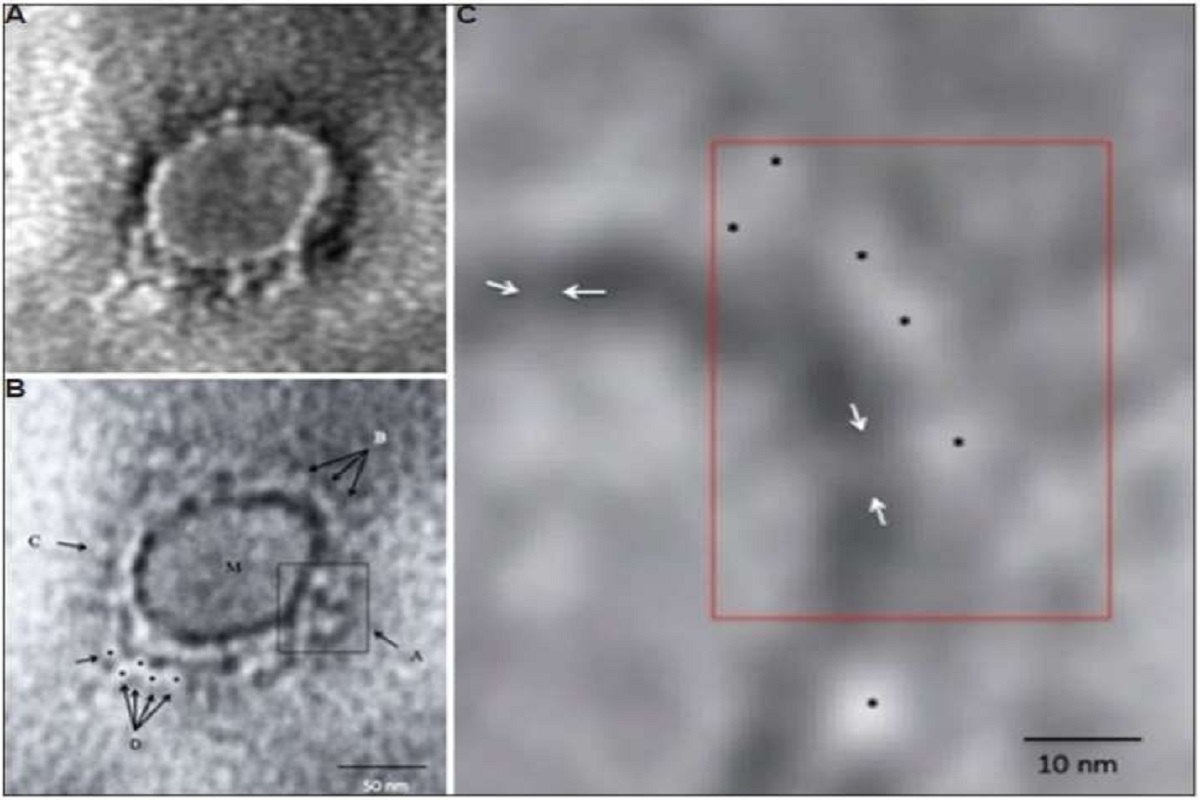The Coronavirus or COVID-19 which so far was faceless, but now one can see how it looks like, as India has released images of the coronavirus caught by a team of ICMR-National Institute of Virology (NIV) scientists in Pune.
Published in the Indian Journal of Medical Research, the images of Sars-Cov-2, the virus that causes Covid-19, are from the throat swab of the first laboratory confirmed case in India reported on January 30. The woman who returned from Wuhan in China, was diagnosed with Covid-19 after returning to India.
Advertisement
The NIV did the gene sequencing of the samples from Kerala and found that the virus was a 99.98 per cent match with the virus in Wuhan.
A total of seven negative-stained virus particles having morphodiagnostic features of a coronavirus-like particle could be imaged in the fields scanned. These included the round shape of the virus and a cobbled surface structure having envelope projections.
The image revealed the presence of stalk-like projections ending in round peplomeric structures typical of a coronavirus particle.
The study read, “In summary, to the best of our knowledge, this is the first report from India detecting the SARS-CoV-2 virus using TEM directly in a throat swab specimen confirmed by PCR. Although TEM imaging was limited by particle load in the specimen, we could still detect morphologically identifiable intact particles in stored clinical sample without initial fixation.”
The ICMR-NIV, National Influenza Center team authored the article titled “Transmission electron microscopy imaging of SARS-CoV-2”. The authors include Atanu Basu, deputy director and head of electron microscopy and pathology at NIV Pune.
According to the article, one particular virus particle was very well preserved, showing features very typical of coronaviruses. This particle was 75 nm in size and showed patchy stain pooling on the surface and a distinct envelope projection ending in round peplomeric (glycoprotein spike on the viral surface). These bind only to certain receptors on the host cell.
According to the study, the description of a novel human coronavirus, initially referred to as the Wuhan coronavirus (CoV), is currently designated as severe acute respiratory syndrome (SARS)-CoV-2 as per the latest International Committee on Taxonomy of Viruses (ICTV) classification. It is probably the most recent human pneumonia virus with high outbreak potential.
This novel virus was initially identified through next-generation sequencing (NGS) and was suggested to have a possible zoonotic origin. Till date, detailed morphology and ultrastructure of this virus remains incompletely understood.
India on Saturday, recorded a sharp rise in the number of Coronavirus cases with 149 patients testing positive for the highly contagious disease — the highest single-day jump — taking the tally over 850 with the death toll at 19, according to the Union Health Ministry.
In its updated figures, the ministry stated two fresh deaths.
However, it could not be immediately known where these two new deaths were reported from as the state-wise figures are awaited.
Meanwhile, the World Health Organization warned Friday that a dire lack of protective gear for health workers battling the COVID-19 pandemic is one of the most pressing threats in the fight to prevent deaths, . “The chronic global shortage of personal protective equipment is now one of the most urgent threats to our collective ability to save lives,” WHO chief Tedros Adhanom Ghebreyesus told a virtual news conference in Geneva.
(With IANS inputs)











